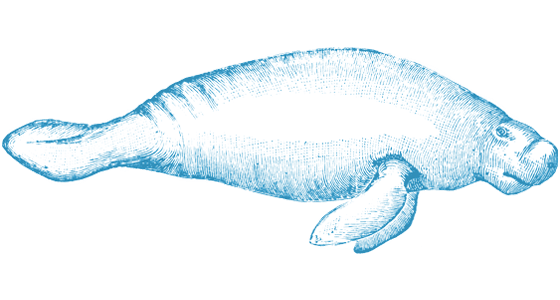
Manatee
TRICHECHUS MANATUS
Share
About
In Biscayne National Park, the best place to spot manatees is in the harbor just north of the Visitor’s Center. Or rent a kayak, canoe or paddle boat and go out into the bay in search of them. They might be massive creatures, but they are gentle giants.
Top 5 Places to See Manatees in Miami
- Black Point. Marina, Miami.
- Manatee. Lagoon – Florida Power & Light Eco-Discovery Center, West Palm Beach.
- Manatee. Observation and Educational Center, Fort Pierce.
- Canaveral. National Seashore Manatee Observation Deck, Titusville.
- Crystal. River National Wildlife Refuge, Crystal River
First, the Sad News: They’re Dying at Record Numbers
This year has been an especially deadly one for Florida’s manatees, with nearly 1,000 deaths – the highest in more than 45 years, and much higher than the previous record of 830 manatee deaths in 2013, when exposure to toxic red tide killed many of them. In January and February of this year alone, Florida manatees died at the rate of seven a day.
In response, federal wildlife officials have designated the die-off as an “Unusual Mortality Event,” allowing the federal government to work with state and non-profit organizations to investigate the causes and take action to prevent further manatee deaths.
The Giant Sea Cows Are Starving to Death
Although manatees have very few natural predators, many are accidentally killed by boaters, while others sometimes get entangled in fishing nets, but the leading cause of death this year is likely from seagrass die-off.
Manatees are aquatic herbivores and eat seagrasses, weeds, and other aquatic vegetation. Florida’s Fish and Wildlife Research Institute says that many manatee deaths this year happened when the animals migrated into the Indian River Lagoon, where most of the seagrass has been presumably killed off by nutrient pollution.
Manatees Are Big – and Big Eaters
Typical adult manatees grow to be 9-10 feet long and weigh around 1,000 pounds, but some grow to more than 13 feet long and weigh more than 3,500 pounds. They’re big eaters, too, spending as much as 8 hours a day searching for food. Adult manatees usually consume between 4 to 9 percent of their body weight in aquatic vegetation daily, but they have been known to eat as much as 10 percent of their weight in just 24 hours.
Manatees May Live Over 65 Years in Captivity
Manatees may live over 65 years in captivity, but of those wild manatees that reach adulthood (around 3 to 7 years after birth), only half survive to their early 20s. Manatees Are Protected by Law
Look at them, but never touch manatees. Keep your distance when boating (they are easier to spot with polarized sunglasses) even if you are steering a kayak, canoe or paddleboard.
West Indian manatees are listed as threatened under the Endangered Species Act of 1973, and protected under federal law by the Marine Mammal Protection Act of 1972, which makes it illegal to harass, hunt, capture or kill them. They are also protected by the Florida Manatee Sanctuary Act of 1978. Violations can be met with civil and/or criminal penalties, monetary fines of up to $100,000, and/or imprisonment for up to one year.
National parks, particularly in Florida, help ensure the continued protection of manatees by providing safe havens subject to environmental regulations that protect wildlife and water quality and enforcing laws that restrict boating activity to minimize watercraft-related manatee fatalities. Everglades National Park, for example, tags and monitors manatees, which enables park biologists to track the park’s manatee population and to identify and address warning signs of stress before the park’s manatee population can experience significant decline.
